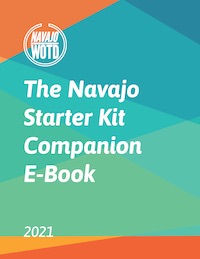hane' binaaltsoos
newspaper
hun neh bin alt tsoh hs
Today’s a perfect day for the Navajo word for newspaper.
When you use hane’, you’re talking about either a tale, or story, or else the history of something. For example, you may come across Diné bahane’ which refers to the history, or story of the Navajo people.
And then you have naaltsoos, which is an umbrella term for paper and books. With the third person possessive enclitic (bí-), it become binaaltsoos which is essentially it’s paper.
Together you achieve a word that mirrors the description of a newspaper.
There is also a variant that uses aseezį́ – the Navajo word for gossip – in place of hane’. Nowadays, this would refer to a tabloid or periodicals of that nature.
On the Navajo Nation, the Navajo Times publishes its newspaper every Thursday. Before the Navajo Times was Ádahooníłígíí, which was explained in an earlier post as meaning “the area’s happenings/occurances/current events”.
